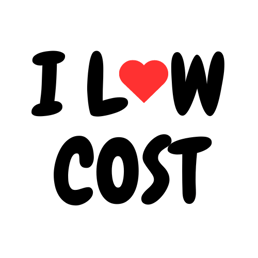
Because wages seem to be remaining stagnant and college costs continue to soar, financial concerns are weighing more heavily on families when students make their college decisions. Additionally, student loan debt is increasing and young people are worried about being saddled with astronomical debt when they graduate. That's why so many students are interested in going to one of the cheapest colleges in America.
In this article, we provide you with a list of the 50 cheapest colleges in the United States. We also explain the costs of various colleges and how finances should influence your college selection process.
What Are the Average College Costs?
In its most recent survey of college pricing, the College Board reports the following:
- A moderate budget for an in-state, public college for 2022-2023 averaged $27,940
- A moderate budget for an out-of-state, public college for 2022-2023 averaged $45,240
- A moderate budget for a private, not-for-profit college for 2022-2023 averaged $57,570
These budgets are for the total cost of attendance to a college (for one academic year).
Total cost combines the following four things, which we go over in detail below:
- Tuition and fees
- Housing and meals (also known as room and board)
- Books and school supplies
- Personal and transportation expenses
Keep in mind that the cheapest universities in the US will come in under these numbers!
Tuition and Fees
Many colleges report a combined tuition and fees figure. Colleges often charge mandatory fees for services such as the library, transportation, athletic facilities, and student activities.
According to the College Board, the average cost of tuition and fees for the 2022-2023 academic year was as follows:
- Public In-State Colleges: $10,940
- Public Out-of-State Colleges: $28,240
- Private Nonprofit Colleges: $39,400
Housing and Meals
The average cost of room and board in 2022-2023 ranged from $12,310 at four-year public schools to $14,030 at private schools.
However, the cost of "room and board" will vary depending on the campus housing and meal plan you choose. Colleges also provide room and board estimates for living off campus based on typical student costs.
Books and School Supplies
Most colleges estimate the average costs for required learning materials; some even include the cost of a computer and computer accessories. The average cost for books and supplies for the 2022-2023 school year was $1,240 at both public colleges and private colleges.
Personal and Transportation Expenses
Colleges may estimate some expenses they don't bill you for. These include local transportation, clothing, personal items, and entertainment. Expenses in this category for the 2022-23 school year ran from $2,900 at private colleges to $3,450 at public universities.

(Tracy O/Flickr)
What Do Cheap Colleges Cost and Why Do They Cost Less?
The average annual cost of colleges on the list below is $4,397. Most are much cheaper in part because they're public institutions subsidized by state and city governments.
However, there are a handful of private colleges on our list that have made it part of their missions to offer low-cost education. For example, Berea College in Kentucky is tuition-free: all students enter into a labor program to finance their education.
How We Came Up With This List of the Cheapest Colleges in the US
The following schools are all ranked by net price. These net prices, which come from College Navigator (part of the National Center for Education Statistics), are generated by subtracting the average amount of federal, state/local government, or institutional grant or scholarship aid from the total cost of attendance.
As a reminder, total cost of attendance is the sum of tuition and required fees (lower of in-district or in-state), books and supplies, and the weighted average for housing, food, and other expenses. As such, our list should give you a general expectation of the total annual cost of attendance.
Note that we've excluded community colleges and schools that offer primarily associate degrees, graduate schools, and specialty schools that would only appeal to a small subset of applicants.
The 50 Cheapest Colleges in the United States
If cost is an important factor in your college decision, you can use the list below to identify possible colleges of interest. Research these schools you're considering to see whether they fit your general criteria for what you're looking for in a college.
The list should also give you a clearer idea of the price range of the cheapest colleges in the US.
Remember that most of these schools are public and the listed price is for in-state residents. Schools are arranged from lowest total cost to highest.
|
School
|
Location
|
Total Cost (2022-2023)
|
|
Hampton, VA
|
$148
|
|
|
Sitting Bull College
|
Fort Yates, ND
|
$496
|
|
Northern Marianas College
|
Saipan, MP
|
$1,841
|
|
Manati, PR
|
$2,581
|
|
|
University of Arkansas System eVersity
|
Little Rock, AR
|
$2,617
|
|
Clearwater, FL
|
$2,702
|
|
|
Bayamon, PR
|
$2,823
|
|
|
Carolina, PR
|
$2,970
|
|
|
Ponce, PR
|
$3,033
|
|
|
Elizabeth City, NC
|
$3,270
|
|
|
Florida State College at Jacksonville
|
Jacksonville, FL
|
$3,306
|
|
Pensacola State College
|
Pensacola, FL
|
$3,351
|
|
Eastern Florida State College
|
Cocoa, FL
|
$3,445
|
|
Vega Baja, PR
|
$3,539
|
|
|
Guaynabo, PR
|
$3,557
|
|
|
Texas A&M University-Central Texas
|
Killeen, TX
|
$3,637
|
|
Dewey University-Juana Diaz
|
Juana Diaz, PR
|
$3,854
|
|
Los Angeles, CA
|
$3,859
|
|
|
Indian River State College
|
Fort Pierce, FL
|
$3,878
|
|
New York, NY
|
$3,897
|
|
|
Bronx, NY
|
$3,913
|
|
|
New York, NY
|
$4,014
|
|
|
Dewey University-Manati
|
Manati, PR
|
$4,081
|
|
Laredo, TX
|
$4,165
|
|
|
South Florida State College
|
Avon Park, FL
|
$4,228
|
|
The University of Texas Rio Grande Valley
|
Edinburg, TX
|
$4,419
|
|
New York, NY
|
$4,546
|
|
|
Pasco-Hernando State College
|
New Port Richey, FL
|
$4,637
|
|
Humacao, PR
|
$4,669
|
|
|
Carson, CA
|
$4,683
|
|
|
Brooklyn, NY
|
$4,736
|
|
|
Berea, KY
|
$4,938
|
|
|
Aguadilla, PR
|
$4,984
|
|
|
Dewey University, Carolina
|
Carolina, PR
|
$5,018
|
|
Jamaica, NY
|
$5,228
|
|
|
St Johns River State College
|
Palatka, FL
|
$5,266
|
|
Dewey University-Hato Rey
|
Hato Rey, PR
|
$5,380
|
|
Gary, IN
|
$5,453
|
|
|
San Sebastian, PR
|
$5,518
|
|
|
Queens, NY
|
$5,594
|
|
|
Pacific Islands University
|
Mangilao, GU
|
$5,597
|
|
Dalton, GA
|
$5,776
|
|
|
Gulf Coast State College
|
Panama City, FL
|
$5,851
|
|
Oklahoma State University-Oklahoma City
|
Oklahoma City, OK
|
$5,860
|
|
Universidad Central de Bayamon
|
Bayamon, PR
|
$5,732
|
|
Brigham Young University-Idaho
|
Rexburg, ID
|
$6,871
|
|
Toppenish, WA
|
$7,356
|
|
|
Aguadilla, PR
|
$7,376
|
|
|
Point Lookout, MO
|
$7,505
|
|
|
Columbus, OH
|
$7,658
|
When Should Cost Be a Consideration in Your College Choice?
Ideally, you shouldn't have to consider cost when thinking of which school you want to attend, and college would be affordable for everyone.
Unfortunately, the reality is that cost is often a significant factor. When applying, apply to at least one or two more "affordable" safety schools if cost is a concern for you and your family. Keep our list of the cheapest schools handy during this process—it can help you narrow down your list.
Keep in mind that you don't know how much you're going to have to pay to attend a certain school before you apply. So don't let the sticker price prevent you from applying. After all, most financial aid and scholarships are awarded after you've been accepted but before you commit to that or another college.
Furthermore, many of the most selective colleges claim to meet 100% of a student's financial need through a combination of school, state, and federal aid.
Your Expected Family Contribution, or EFC, is determined from your FAFSA, or the Free Application for Federal Student Aid.
After you're accepted to a school, you'll receive your financial aid package. At that point, you can determine out-of-pocket expenses and how much you would have to take out in loans.
It's wise to consider finances in your college decision. Weigh the financial burden of attending with the quality of education, how much you want to attend that particular university, and the expected financial return of going there. In short, compare your options. It's up to you to determine how much debt is worth it.
Try to remind yourself that success after college is more dependent on you than it is on the college you attend. You can attain all your professional goals regardless of where you go to school.
Still, attending a better college that might be more expensive can offer you certain advantages and privileges while you're in college and beyond.
Are There More Affordable College Options Than These?
Here are some final tips if you're looking for more affordable college options.
Generally, public schools will be cheaper, especially for in-state residents. Remember that the sticker price of public schools is cheaper, but some private schools give out generous financial aid; therefore, it's possible that a private school could be the cheaper option for you after you get your financial aid packages.
There are also several tuition-free colleges. Many of these schools are intended for low-income students, with some even having a work requirement for students. You should also look into need-blind colleges that don't take into consideration a student's economic status during the admissions process.
Finally, you can always try to make college more affordable by winning some great scholarships. Check out these 80+ colleges with full-tuition scholarships and get started on applying for full-ride scholarships today. Scholarships can make the cheapest universities in United States...well, even more affordable!
What's Next?
If you're a low-income student, you'll want to read this article about the Pell Grant to help you pay for college. Think you might need to take out a loan to help pay for college? Read our guide to learn how to get a student loan.
For more information about the price of a college education, check out our expert guide on how much college costs.
Have friends who also need help with test prep? Share this article!

Justin has extensive experience teaching SAT prep and guiding high school students through the college admissions and selection process. He is firmly committed to improving equity in education and helping students to reach their educational goals. Justin received an athletic scholarship for gymnastics at Stanford University and graduated with a BA in American Studies.




































 Holly R.
Holly R.